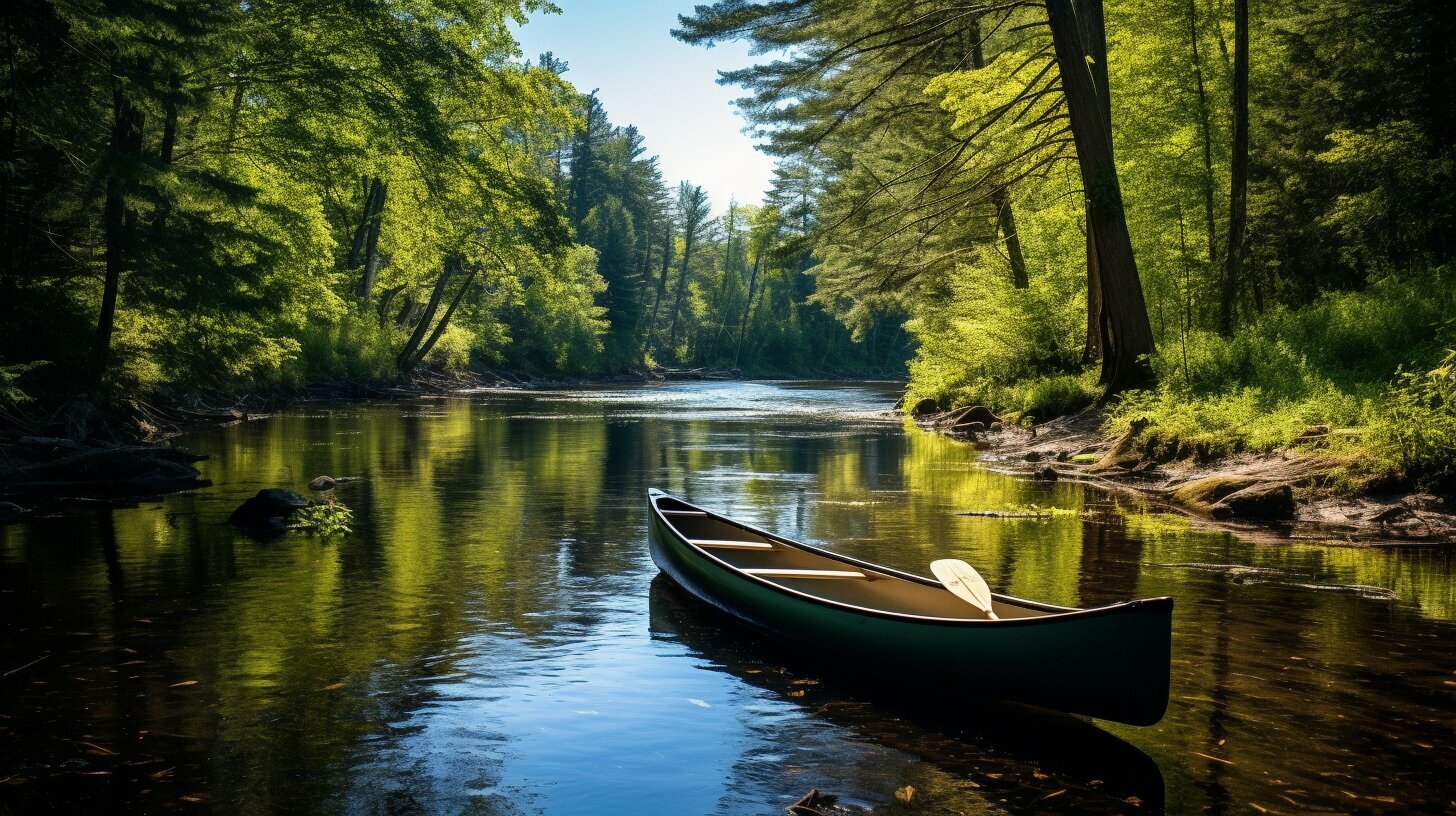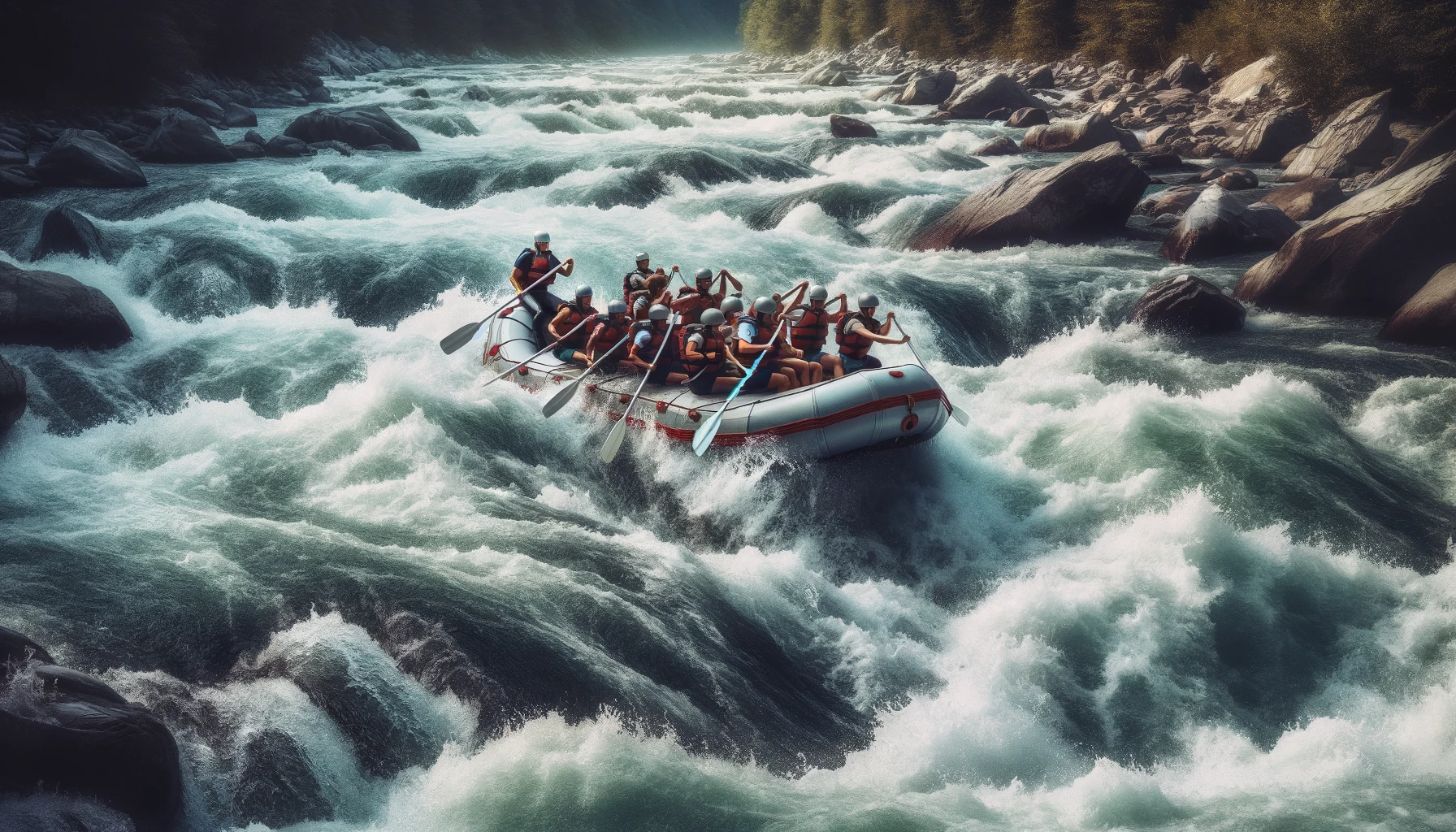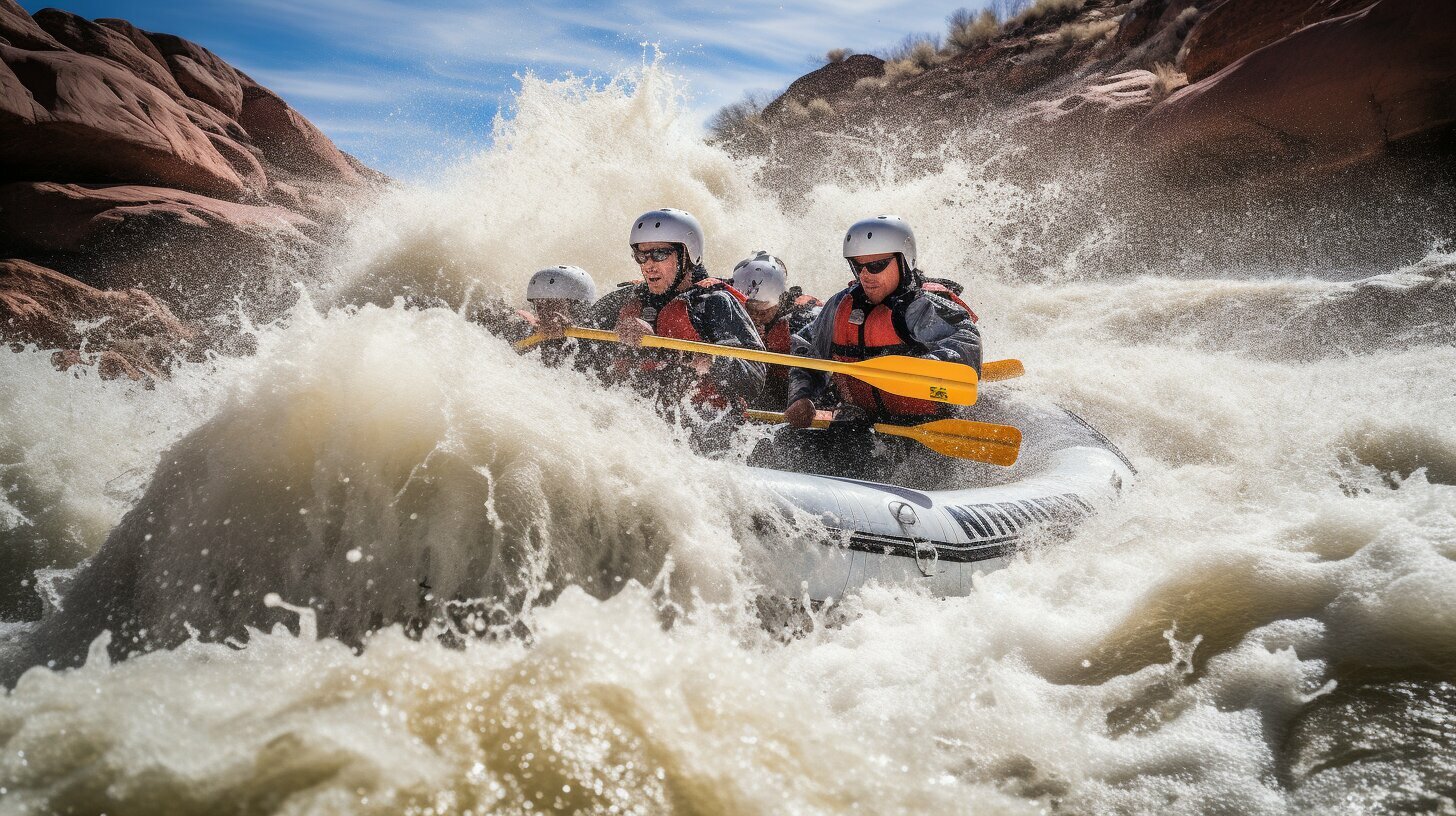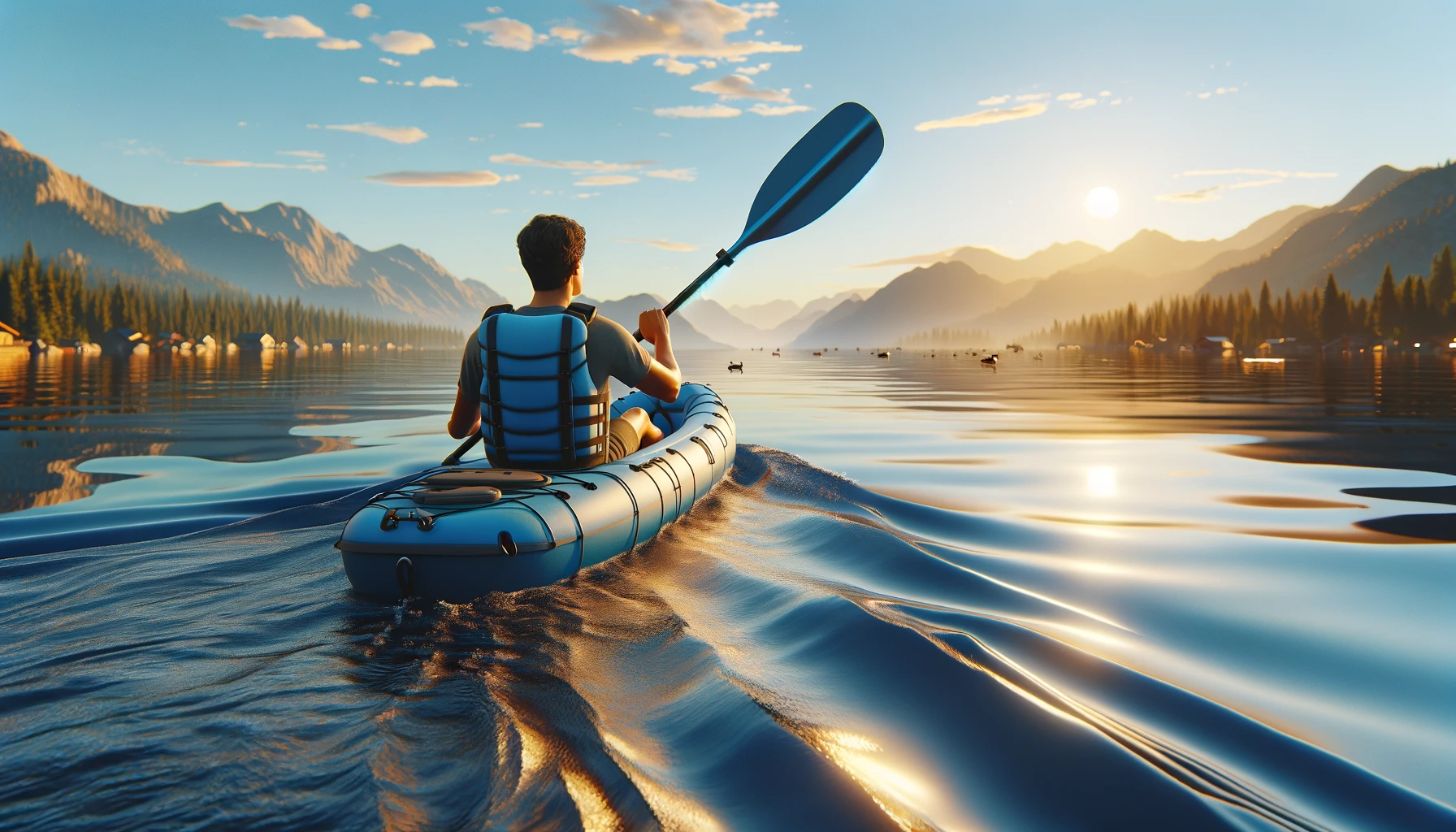Are you ready to experience the thrill of gliding through the water in a canoe? Whether you’re a complete novice or have some experience, this comprehensive guide will equip you with the knowledge and skills to master canoeing. From choosing essential gear to paddling techniques and safety measures, this guide will cover everything you need to know to start your water adventure confidently.
Canoeing is a great way to connect with nature, improve your physical and mental health, and have fun with friends and family. With the right knowledge and skills, this water sport can become a lifelong passion. So, let’s get started on this exciting journey and learn how to enjoy canoeing safely and confidently, even as a beginner.
Key Takeaways
- Canoeing can be enjoyed by anyone, regardless of their experience level.
- Choosing the right gear is essential for a safe and comfortable canoeing experience.
- Learning foundational paddling techniques and safety measures is crucial for beginner canoeists.
- Exploring different environments can add variety to your canoeing experiences.
- Practicing proper canoeing etiquette is important for preserving nature and respecting others.
Canoeing for Beginners: The Adventure Awaits
If you’re looking for a thrilling and rewarding activity that allows you to connect with nature and explore serene waterways, canoeing is an excellent option. It’s no surprise that canoeing for beginners is becoming increasingly popular, as it offers a unique and unforgettable experience.
Canoeing is an activity that can be enjoyed in various bodies of water, from calm lakes and rivers to challenging whitewater rapids. It’s also versatile, as it can be done solo or with a partner and customized to suit your preferences, whether you’re seeking a leisurely paddle or an adrenaline-filled adventure.
Disclosure: When you buy through links on our site, we may earn an affiliate commission.
Aside from the physical benefits of canoeing, such as improving cardiovascular health and building upper body strength, it also provides mental benefits. The meditative experience of gliding along the water, surrounded by nature, can reduce stress and improve overall well-being.
Whether you’re seeking a solo adventure or an outing with friends or family, canoeing is an accessible and enjoyable water adventure for all levels of experience.
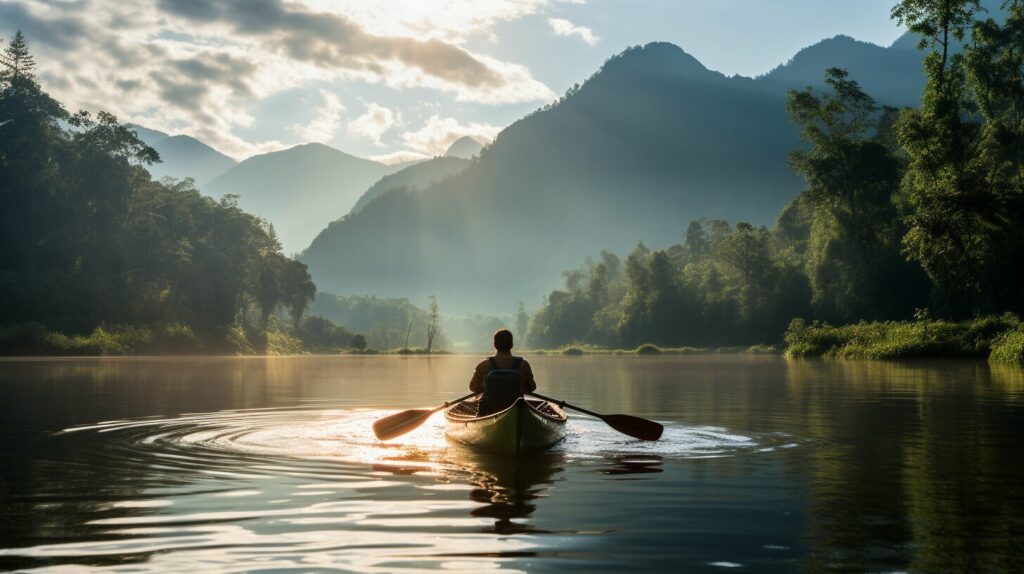
Essential Canoeing Gear
Before you hit the water, you need to ensure you have the necessary equipment. Canoeing is an equipment-intensive activity, and investing in the right gear can make all the difference in your experience. Here are the essential pieces of gear you’ll need:
| Equipment | Description |
|---|---|
| Canoe | The first and most obvious piece of gear is the canoe itself. Canoes come in different shapes, sizes, and materials, so it’s important to choose one that suits your needs and experience level. As a beginner, opt for a wider and more stable canoe that is easy to maneuver. |
| Paddles | Paddles are essential for propelling and steering the canoe. Look for a paddle that is comfortable to grip, appropriately sized for your height, and made of durable material. |
| Life Jacket | A life jacket is a non-negotiable safety item. Choose a jacket that is approved by the US Coast Guard, fits snugly, and has adjustable straps to ensure a perfect fit. |
| Safety Gear | Carrying safety gear such as signaling devices, extra ropes, and a first aid kit can be lifesaving in the event of an emergency. |
| Clothing and Footwear | Wear quick-drying clothes and secure footwear that can be wet without causing discomfort. Be sure to protect yourself from the sun by wearing sunscreen and a hat. |
Choosing the right gear is only half the battle. Make sure that everything fits properly and is in good condition to prevent accidents and ensure that your canoeing experience is pleasant.
Now that you know what equipment you need, it’s time to learn the foundational techniques of canoeing. Read on to the next section to find out more.
Canoeing Techniques for Beginners
Now that you have an understanding of the essential gear required for canoeing, it’s time to learn the foundational techniques of this water sport. With practice, you can become a confident paddler and maneuver through different types of water conditions. Follow these steps to learn canoeing:
1. Master Your Paddling Strokes
There are several paddling strokes that you need to master in order to propel the canoe forward. The basic strokes include:
- The Forward Stroke: This stroke involves dipping the paddle blade into the water at the front of the canoe and pulling it back towards your hip.
- The Backward Stroke: This stroke is used to move the canoe backward. Simply reverse the motion of the forward stroke, pushing the paddle away from your hip.
- The J-Stroke: This is a commonly used stroke that helps you steer while paddling forward. After completing a forward stroke on one side, finish with a J-shaped motion that turns the canoe slightly towards the opposite side.
Practice these strokes on calm water before attempting them in rougher conditions.
2. Learn to Steer and Maneuver Your Canoe
Steering your canoe involves using a combination of paddling strokes, body movements, and weight distribution. To turn left, paddle on the right side of the canoe, and vice versa. To make a sharp turn, lean your body towards the side you want to turn to.
3. Understand Different Water Conditions
Canoeing in calm water is very different from canoeing in swift currents or rough waves. Understanding the characteristics of different water types and how to adapt your paddling techniques is key to increasing your confidence and staying safe on the water. Practice different techniques in a variety of water conditions.
4. Maintain Proper Posture and Balance
Balance is crucial while canoeing. Keep your body centered in the canoe and maintain a low center of gravity. Sit with your back straight, knees bent, and feet firmly planted on the bottom of the canoe. Avoid making sudden movements that can tip the canoe over.
Following these foundational techniques and practicing your skills regularly will help you become a confident and skilled paddler. Remember to always prioritize safety and wear a life jacket while on the water.
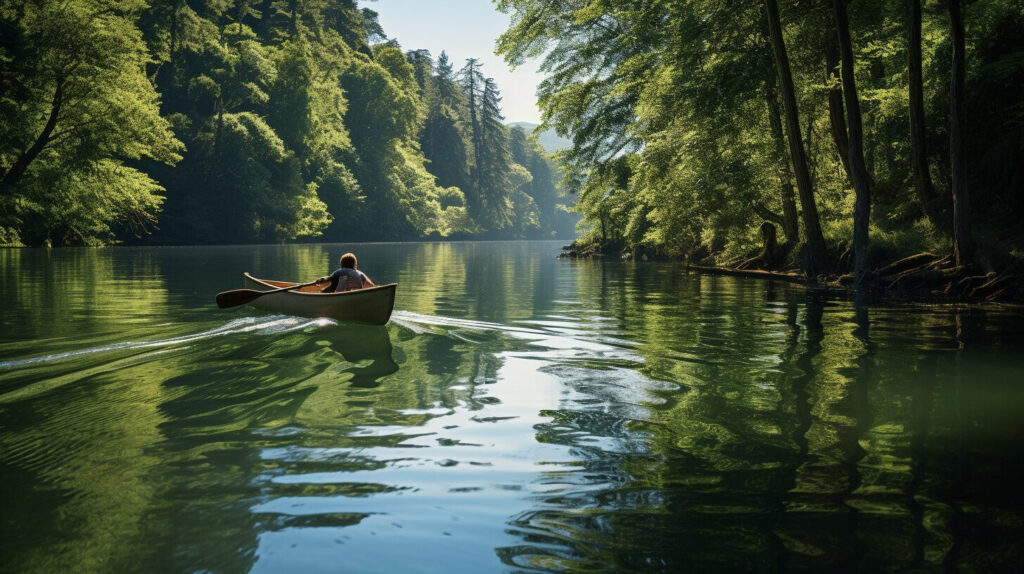
Essential Safety Tips for Beginners
Canoeing is an exciting and fun activity, but safety should always be your top priority. As a beginner, it is important to understand the essential safety measures to ensure a safe and enjoyable experience on the water.
The most important safety item for canoeing is a personal flotation device (PFD) or life jacket. Wearing a properly fitted PFD can save your life in case of an accident. It is important to wear it at all times while on the water, even if you are a strong swimmer.
Before heading out, check the weather forecast to ensure you are aware of any potential hazards such as storms or strong winds. Avoid canoeing in extremely bad weather conditions. It’s better to postpone your trip until the weather is better.
Practice capsizing drills before your first canoeing adventure. Capsizing can happen to anyone, so make sure you know how to right your canoe and how to safely get back in it.
In case of an emergency, it is important to learn self-rescue techniques. One of the most important self-rescue techniques is the “swim to shore” method. It involves staying calm, swimming to the nearest shore, and dragging your canoe with you using a rope.
Always carry a whistle, flashlight, and a throw rope in case of an emergency. It is also recommended to bring a first-aid kit and a cellular phone if available. Lastly, make sure to let someone know where you are going and when you expect to return.
By following these safety essentials, you can ensure a safe and enjoyable canoeing experience as a beginner.
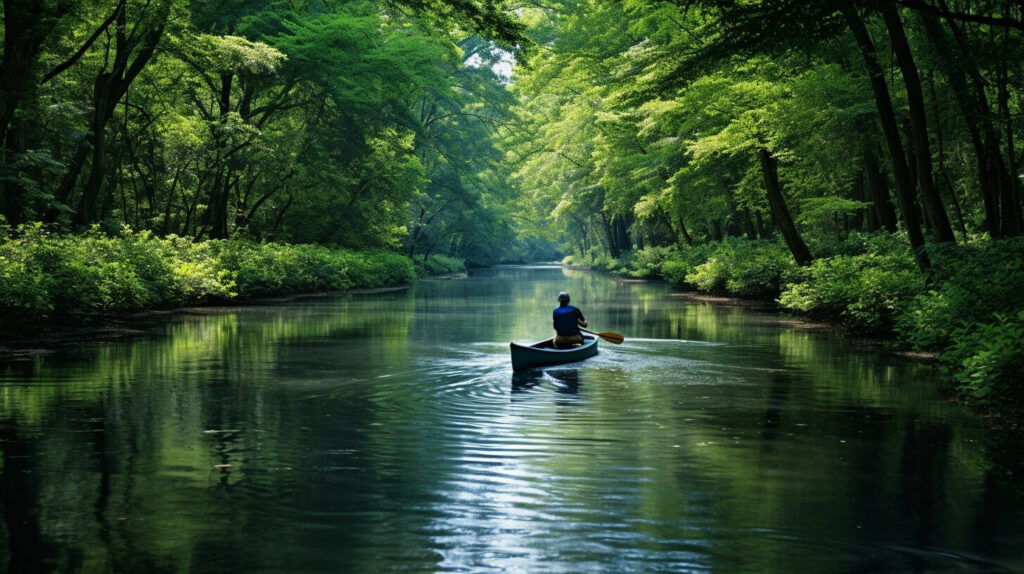
Planning Your First Adventure
Now that you have learned the basics of canoeing, it’s time to plan your first adventure. The location you choose should suit your level of experience, so if you’re starting out in canoeing, it’s wise to choose a calm body of water.
Consider the duration of your trip and the time of year. Ensure that you pack all the necessary supplies, including food, water, sunscreen, and insect repellent. Inform someone of your planned route and expected return time.
When selecting where to go for your first canoeing trip, consider reaching out to a local outfitter or guide for recommendations. Many offer canoe rentals and guided tours, and may even provide transportation to and from the waterway.
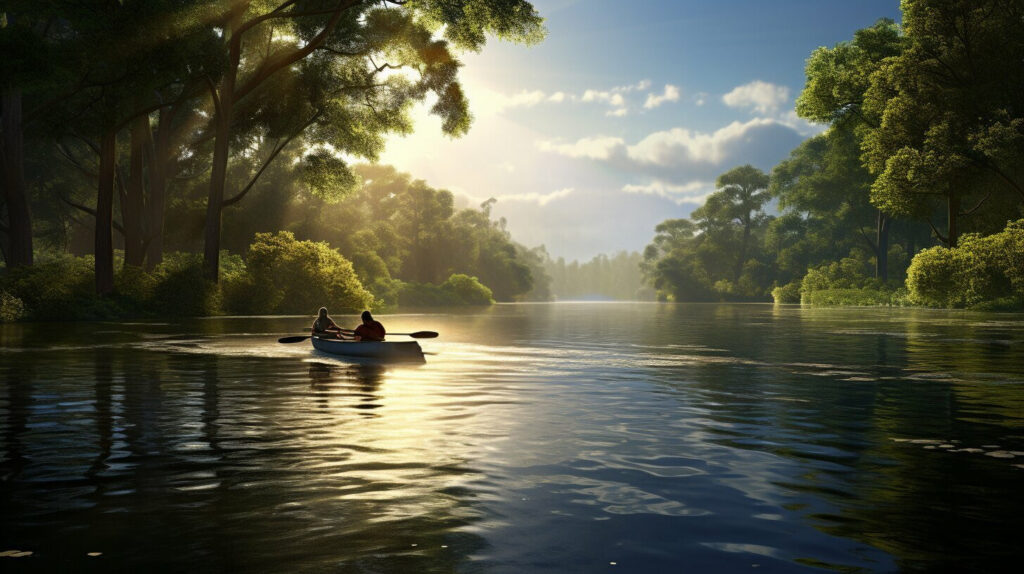
Before embarking on your journey, familiarize yourself with the outdoor etiquette. Leave no trace and pack out all your trash. Respect wildlife and other paddlers by keeping noise levels down and giving them plenty of space.
Remember, canoeing is all about having fun and enjoying the beauty of nature. With proper planning and preparation, you can ensure a safe and memorable first canoeing adventure.
Canoeing Tips and Tricks for Beginners
As you become more comfortable with canoeing, there are several tips and tricks you can use to improve your skills and make your journey smoother. Here are some useful pointers to keep in mind:
- Practice proper posture: Maintain an upright posture with your back straight and your shoulders relaxed. This will help you maintain balance and reduce fatigue.
- Master paddling strokes: Practice different paddling strokes, such as the J-stroke and the sweep stroke, to improve your maneuverability and speed on the water.
- Be aware of your surroundings: Keep an eye out for obstacles such as rocks, logs, and overhanging branches. Understand how different water conditions can affect your canoe and adjust your technique accordingly.
- Use your core muscles: Engage your core muscles while paddling to improve your power and endurance. This will also help reduce strain on your arms and shoulders.
- Communicate with your partner: If you’re canoeing with a partner, communicate clearly to ensure smooth paddling and coordination.
- Keep your gear organized: Use waterproof bags or containers to keep your gear dry and organized. This will help you access your supplies easily and reduce clutter in the canoe.
- Respect nature: Remember to practice proper canoeing etiquette, such as minimizing noise, packing out your waste, and respecting wildlife and other paddlers.
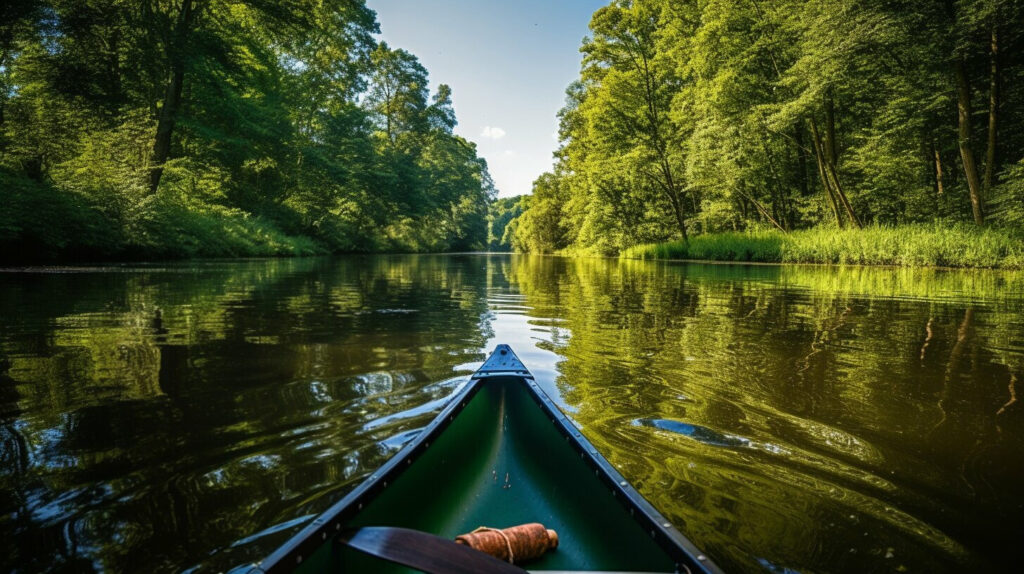
By keeping these tips in mind, you’ll be well on your way to mastering canoeing and enjoying all the wonders of the water. Check out this image for some inspiration – .
Exploring Different Canoeing Environments
Canoeing is a versatile activity that allows you to explore various environments, from calm lakes to fast-flowing rivers. Each environment has its own unique characteristics and requires different techniques. In this section, we will explore the different types of environments you may encounter while canoeing and how to navigate them with ease.
Lakes
Canoeing on a lake is a peaceful and serene experience. The water is usually calm, making it an ideal environment for beginners. However, canoeing on a lake can also be challenging, especially if there is wind or boat traffic. When canoeing on a lake, it’s essential to maintain balance and keep your paddle strokes consistent. If you encounter wind or boat traffic, try to paddle in a straight line and stay alert to avoid collisions.
Rivers
Canoeing on a river is an exciting adventure. Rivers have varying degrees of difficulty, ranging from calm waters to challenging rapids. Before canoeing on a river, make sure to research the water conditions and choose a route that fits your skill level. You’ll need to practice maneuvering your canoe through currents and rapids, and knowing how to read the water and anticipate obstacles is crucial. It’s also important to wear a helmet and a life jacket when canoeing on a river.
Ocean
Canoeing on the ocean can be a thrilling experience, but it’s also one of the most challenging environments. The ocean has unpredictable waves and currents, and weather conditions can change rapidly. Before canoeing on the ocean, make sure to check the weather forecast and plan your route accordingly. You’ll need to be an experienced paddler and be comfortable with rough water conditions. It’s also crucial to wear a wetsuit or drysuit and carry safety gear, such as flares and a VHF radio.
Whether you’re canoeing on a lake, river, or ocean, it’s essential to stay safe and follow proper canoeing etiquette. Respect nature and others by leaving no trace, avoiding excessive noise, and keeping a safe distance from wildlife. With these tips, you’ll be able to explore different canoeing environments and have an unforgettable water adventure!
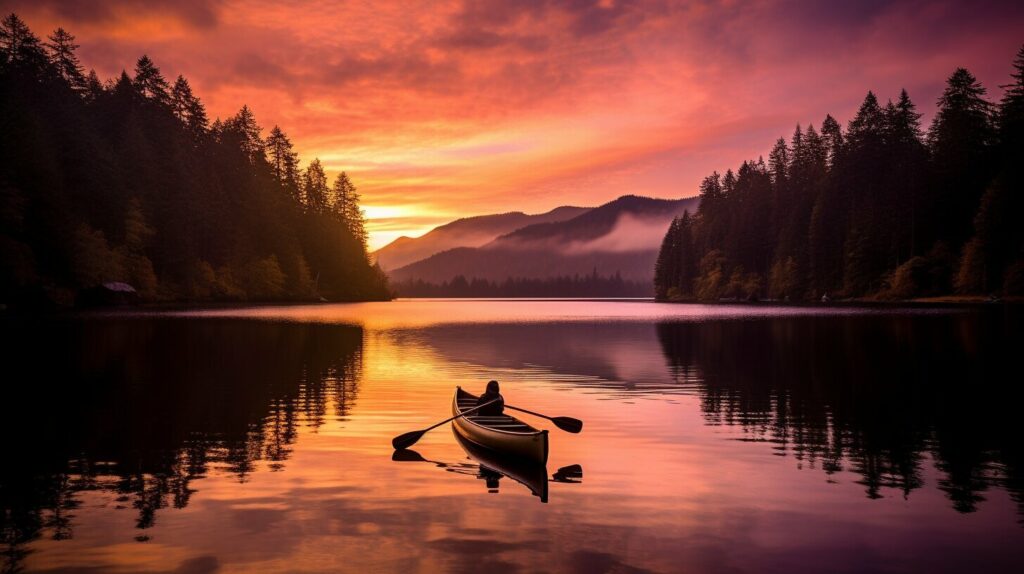
Canoeing Etiquette Tips
Canoeing is a fantastic way to immerse yourself in the beauty and serenity of nature. However, it is important to remember that the enjoyment of this activity depends on respecting the environment and others around you. Here are some guidelines to follow to ensure you have a positive experience while starting out in canoeing.
Noise Control
While it’s tempting to shout and holler as you paddle through beautiful scenery, keep in mind that excessive noise can disturb wildlife and other paddlers. Respect the peace of the outdoors and keep noises to a minimum, enjoying the sounds of nature instead.
Waste Management
Leave no trace is a critical principle that must be followed while canoeing. Don’t litter, and always pack out any trash you may generate. Make sure you dispose of wastewater and human waste responsibly and properly in designated areas, or if no facilities are available, bury it in a shallow hole at least 200 feet from water sources.
Interaction with Wildlife
One of the greatest joys of canoeing is the chance to view wildlife up close. However, it is essential to respect their natural habitat and act cautiously so as not to disturb them. Keep a safe distance from animals and never feed them or interfere with their behaviors.
Interaction with Other Paddlers
Other paddlers share the waterways with you, so it is important to practice courteous behavior towards them. Yield the right of way to faster boats, keep a safe distance between your canoe and others, and avoid making waves that might cause other paddlers to capsize. Be friendly and respectful towards others who share your love of canoeing.
By following these canoeing etiquette tips, you’ll be able to enjoy the beauty of nature while ensuring that the environment remains pristine for future generations.
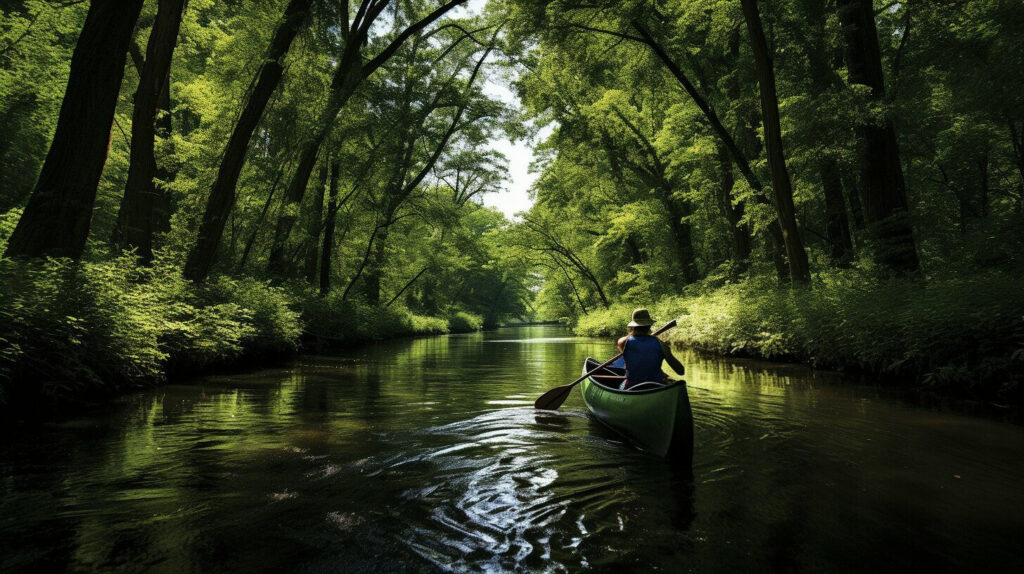
Conclusion
As you venture out on your first canoeing trip, remember to start small and prioritize safety. Choose a calm body of water, wear your life jacket, and take it slow as you get accustomed to being on the water. With practice, you’ll gain confidence in your abilities. Before long, you’ll be able to handle different water conditions and environments.
Canoeing opens up a whole new world of adventure and connection with nature. It provides an opportunity to explore places that can only be accessed from the water. As a beginner, focus on developing your skills and avoid taking unnecessary risks. With experience, you’ll be able to tackle more challenging rapids and longer distances.
Make sure to respect nature, other paddlers, and the pristine waterways we are so fortunate to enjoy. Follow proper etiquette and minimize your impact. Share your passion for canoeing with friends and family to create lasting memories.
The tips and techniques covered in this guide provide a strong foundation for your canoeing journey. Now it’s time to get out on the water! Start slowly, be safe, and let the adventure begin.
FAQ
Q: What is canoeing?
A: Canoeing is a water activity that involves propelling a canoe through the water using paddles. It can be done in various environments such as rivers, lakes, and even whitewater rapids.
Q: Is canoeing suitable for beginners?
A: Yes, canoeing is a great activity for beginners. With proper guidance and practice, anyone can learn the basics of canoeing and enjoy this water adventure.
Q: Do I need any prior experience to start canoeing?
A: No, prior experience is not necessary to start canoeing. However, it is recommended to take basic lessons or go on guided trips to learn the fundamental techniques and safety measures.
Q: What gear do I need for canoeing?
A: Essential gear for canoeing includes a canoe, paddles, life jackets, and safety equipment such as a whistle and throw bag. It is important to choose gear that suits your skill level and the type of water you’ll be canoeing in.
Q: How can I improve my canoeing skills?
A: To improve your canoeing skills, practice regularly and focus on mastering different paddling strokes and techniques. Seek guidance from experienced paddlers or consider taking advanced lessons to enhance your skills.
Q: What safety measures should I take while canoeing?
A: Safety should always be a priority while canoeing. Make sure to wear a properly fitted life jacket, assess weather conditions before heading out, practice capsizing drills, and learn self-rescue techniques in case of emergencies.
Q: How can I plan my first canoeing adventure?
A: To plan your first canoeing adventure, research suitable locations, consider the duration of the trip, pack necessary supplies such as food, water, and a first aid kit, and familiarize yourself with outdoor etiquette and regulations for the area.
Q: What are some useful tips for beginner canoeists?
A: Some useful tips for beginner canoeists include maintaining balance and posture while paddling, practicing steering techniques, staying aware of obstacles in the water, and adjusting your technique based on different water conditions.
Q: Can I canoe in different types of water environments?
A: Yes, canoeing can be enjoyed in various water environments such as calm lakes, slow-moving rivers, or even more challenging whitewater rapids. Each environment requires different techniques and skills.
Q: Why is canoeing etiquette important?
A: Canoeing etiquette is important to respect nature, minimize disturbances to wildlife, and ensure a positive experience for yourself and others. Guidelines include controlling noise levels, properly disposing of waste, and being considerate towards fellow paddlers.

